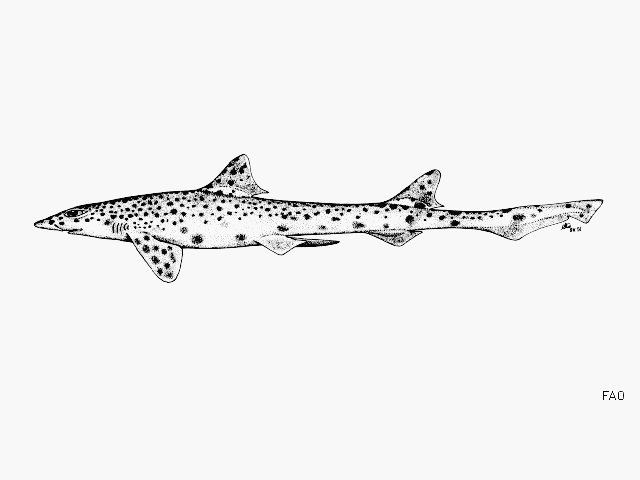| Proscylliidae (Finback catsharks) |
| 57 cm TL (male/unsexed); 65 cm TL (female) |
|
demersal; marine; depth range 50 - 100 m |
| Western Pacific: southeastern Japan to Viet Nam and northwestern Java, Indonesia (Ref. 13566). |
|
Dorsal spines (total): 0-0; Dorsal soft rays (total): 0-0; Anal spines: 0-0; Anal soft rays: 0-0. Caudal fin without a rippled dorsal margin and ventral lobe but with a strong subterminal notch; vertebral axis of caudal fin little raised above body axis (Ref. 13566). Round dark brown spots and indistinct saddles (Ref. 13566). |
| A little-known, uncommon bottom-dwelling shark found on the shelves of continental and insular waters (Ref. 244). Dwell on the sublittoral zone, 50-320 m (Ref. 11230). Food habits little known; probably feeding on bony fishes, crustaceans and cephalopods (Ref. 244). Oviparous (Ref. 50449), with 1 to 2 pups in a litter (Ref. 244). |
|
Vulnerable (VU); Date assessed: 30 August 2019 (A2d) Ref. (130435)
|
| harmless |
Source and more info: www.fishbase.org. For personal, classroom, and other internal use only. Not for publication.

